Travel to Alaska is such a treat, but it feels a bit daunting for a lot of people. I used to live in Alaska and have returned as a visitor many times, so I get it. Whether you’re visiting Alaska on a cruise or if you’re doing an epic Alaska road trip, there are some things you need to know or consider as you’re planning your trip.
The weather in Alaska in the summertime is not always what you expect. Will you have an 85 degree day and 23 hours of sunshine or will it be 42 degrees and dumping rain? You simply never know, but you can be prepared for either. These Alaska travel tips will help you set up your trip for success! If you have any questions about travel to Alaska or need specific recommendations, please leave a comment or send us a note. We’re always happy to share more!

Need To Know for Travel to Alaska
Consider this your guide for being prepared for an awesome trip to Alaska. If you’re not a cold weather or mountain person, don’t worry, because you’ll be fine with a little planning and preparation. I think that the key with any great trip is setting realistic expectations for the experience. I like to say “high hopes and low expectations.” That doesn’t mean that travel to Alaska isn’t amazing, but just that it is different for everyone. Fear not!
Understanding Alaska’s Climate
The time of year you travel to Alaska and the region you’re planning to visit will have an absolute impact on the weather and all around vibes of your trip. It’s very likely that visiting Alaska via cruise ship is something you’ve considered or are planning. For the most part, cruises to Alaska depart from either Seattle, Washington or Vancouver, BC and head up through what’s called the Inside Passage. This area is beautiful and includes the towns of Juneau, Sitka, Skagway, Ketchikan and Haines (as well as others).
The Inside Passage tends to stay pretty cool even in the heat of summer, still getting quite a bit of rain through the season. We’ve had pouring rain and gorgeous sunny days, and it’s beautiful both ways. Because rain is so frequent, it doesn’t cancel many activities. If you’re visiting Alaska on a cruise ship and you’re prepaying for excursions, be sure you understand the policies and options in case of bad weather.
As you head up into the interior of Alaska, or even just north out of Anchorage you’ll be going through mountains and valleys. Again, there may still be a bit of rain in the summer up here, but also this is where you may have drought conditions, including forest fires, in July and August. If you keep heading north towards Prudhoe Bay you’ll cross tundra and wide valleys and cross in to the Arctic Circle. It can be dry and beautiful, but also winter will linger longer here. Plan appropriately.

Pack for Any Weather Conditions
When you’re packing for your travel to Alaska, think about everything in layers. Yes, you may be visiting Alaska in July, but then it might be freezing and wet, just like it might be hot and dry in June. As silly as they might sound or look, our family loves and wears the zip-off pants that convert to shorts. They’ve been a go-to for us in all kinds of travel to many different places including Hawaii and Peru.
The other must-bring weather-wise items are coats and top layers. In the summer, it’s worth it to have a waterproof jacket, even if it’s just a waterproof windbreaker. Whether you’re visiting Southeast Alaska on a cruise or doing a road trip visiting all kinds of remote places, you’ll want something light to throw on that is also very helpful in case of rain.
Essential items to pack:
- waterproof jacket
- thermal wear / easy layers
- hiking boots
- warm hat and gloves
Remember that as you’re packing for travel to Alaska, you don’t need to pack like you’re heading out on a ski trip to the cold blizzard conditions, you just need to ensure you can be warm if/when you come into a cold situation.
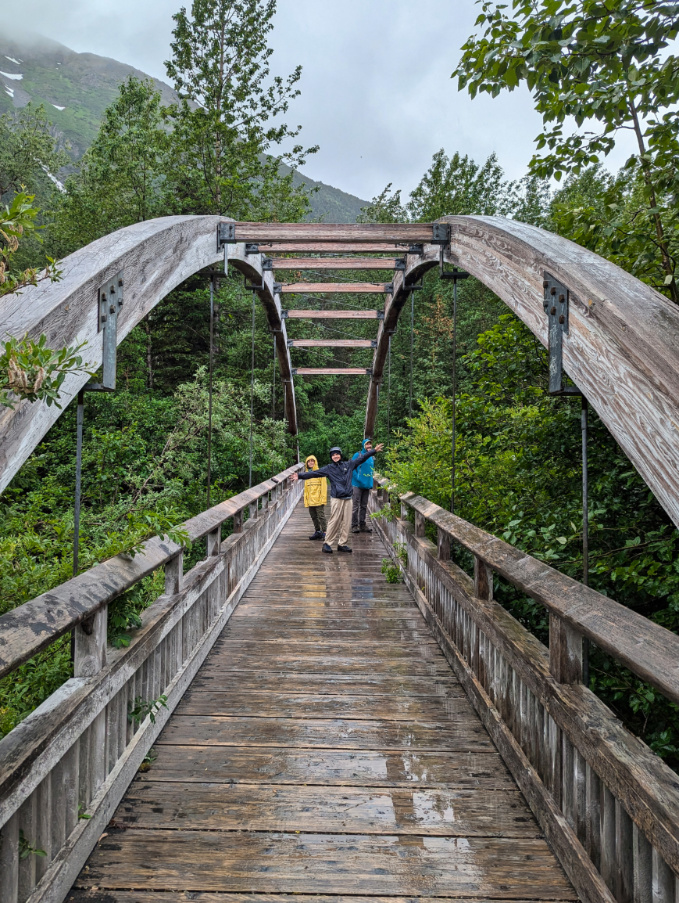
Plan for Daylight Variations
Daylight hours in peak summer are really something. When I lived in Alaska I always had my own apartment so I had really good blackout curtains and only really traveled to other places during the seasonal transition when the daylight was normal. Wow. I had forgotten just how much the constant daylight messes with a person. When you travel to Alaska in the summer, and particularly in June and July, be sure to bring a good sleeping eye mask if you need darkness.
You might be thinking that the bright light at 2am sounds cool and unique. Sure, if you don’t need to run on sleep to function well, it’s swell. When you’re traveling in Alaska in the summer and it’s bright each time you wake up in the night, it messes with your brain and your ability to get back to sleep, let alone sleep soundly. After a few days it has a heavy impact on me, so I have some tips for how I manage dealing with the bright nights during the Alaska summer.
- travel with a good sleeping eye mask
- use a pants hanger with clips to hold the curtains together tight
- bring office bull clips to manage curtains (large size are best)
- move chairs to press curtain bottoms against the wall to stop light getting in
Even if you think you won’t be impacted by the extremely long daylight hours, plan for it to disrupt your sleep and body so that you can enjoy your travel to Alaska as best as possible. If you’re visiting in May, August or September that daylight is much more standard and manageable. Now, about the dead of winter…
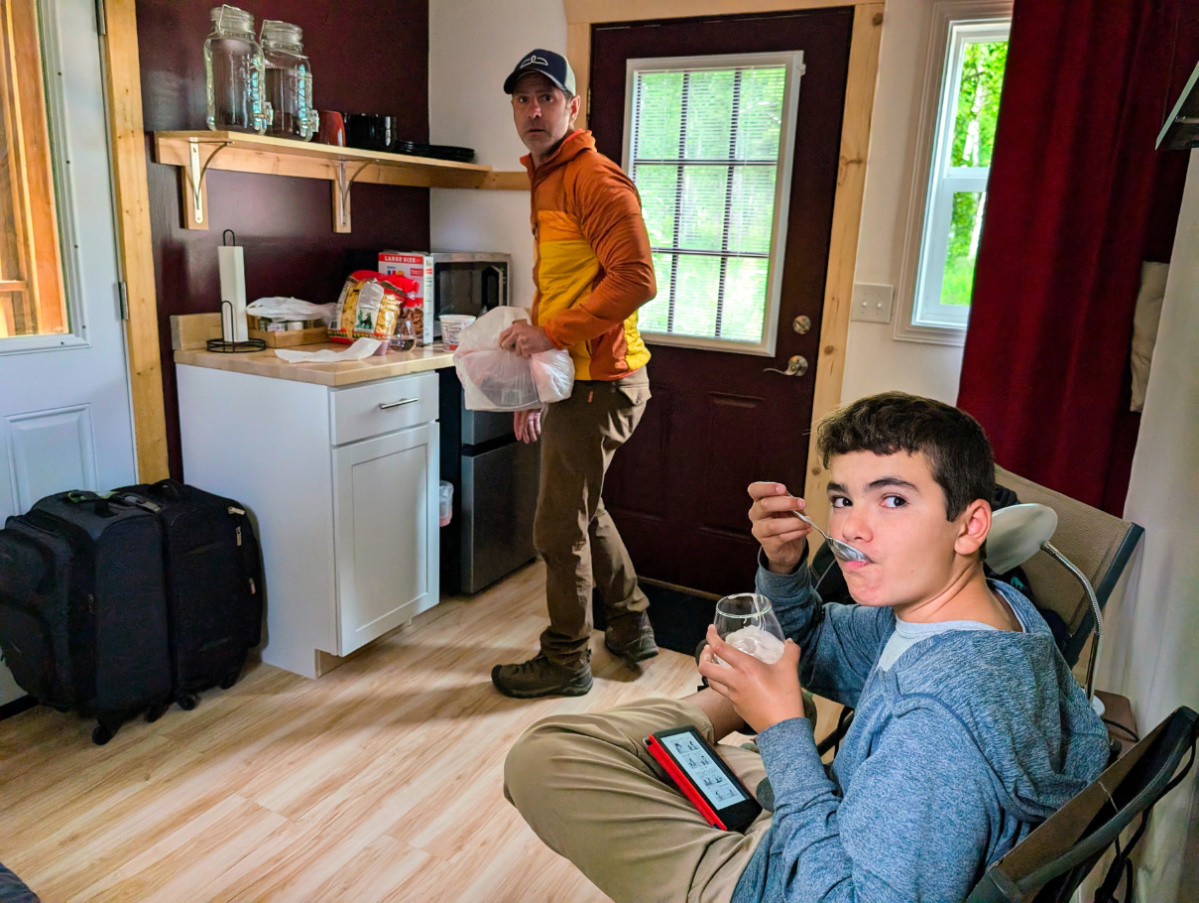
When is the Right Time to Visit Alaska
The best time to visit Alaska is definitely in the summer, but if you can swing a slightly off-season visit you may be treated to a very different experience. Summer is best because you have the best weather and tourist operations are all open and ready for visitors. I have had great luck being able to reserve accommodations and activities in peak summer season with very advanced planning.
If you’re okay with risking the weather a bit, visiting Alaska in late spring and early fall can be fantastic. Southeast Alaska, Anchorage and the Kenai Peninsula are ready to roll for visitors about 2/3 of the way through May and remain very functional through late September. If you can visit before Memorial Day or after Labor Day you’ll find far fewer people around and usually pretty great deals.
Wildlife is very active during these times and while the whales may not have fully made it up to Kenai Fjords yet in May, they’re active in the Inside Passage areas. By late September most of the whales have headed back to Hawaii or Mexico, but there are still moose and bear actively getting ready for winter, so you’ll see something good hopefully!
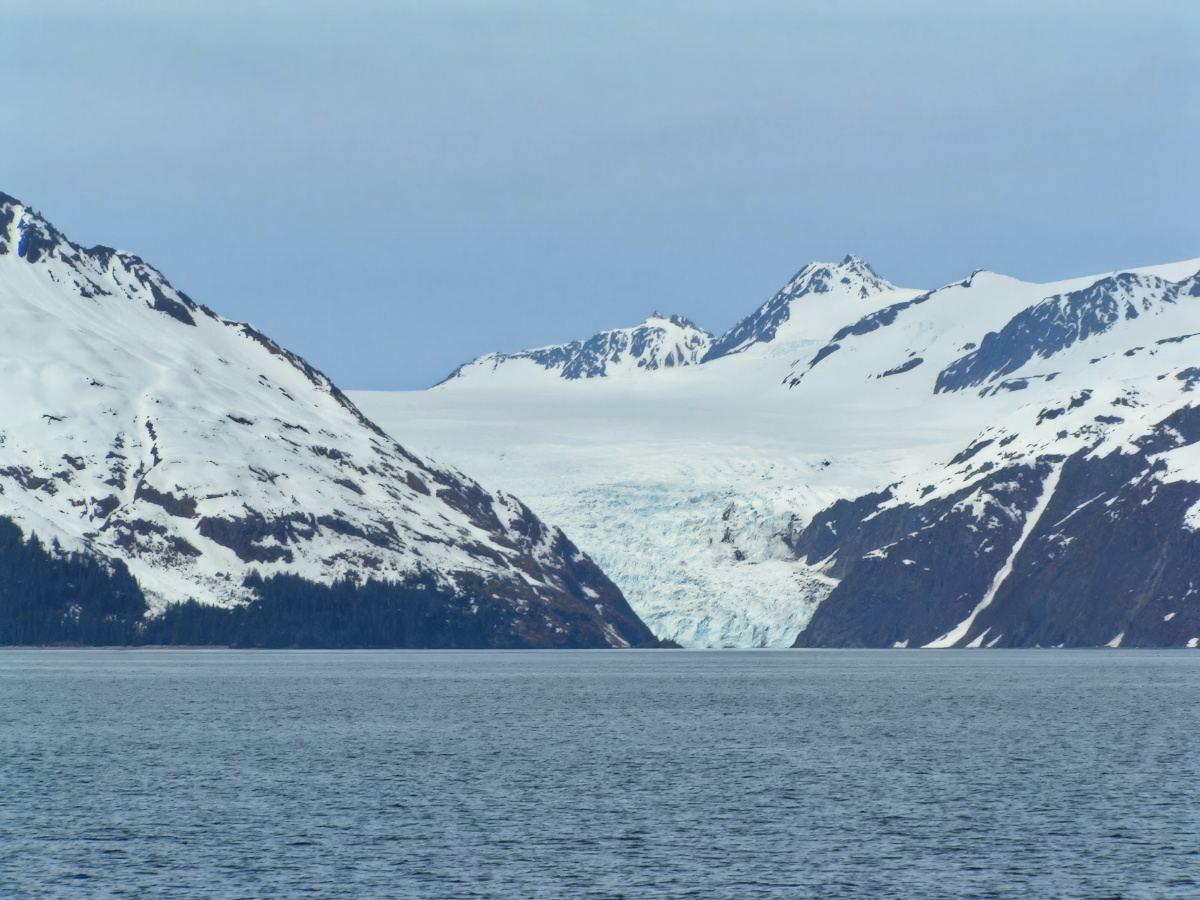
Realistic Northern Lights Expectations
In reality, the best time of year to see the Northern Lights is actually in the winter and spring, but that doesn’t mean you won’t get to see them other times. To see the Aurora Borealis you need it to be very dark, meaning minimal light pollution and hopefully a dark moon. Knowing that darkness is key to seeing the Northern Lights, you know what I’m going to say next: you’re not going to see the Northern Lights in Alaska during peak summer. Zero chance.
Having said that, if you happen to travel to Alaska in May or September and are awake at 2am and are someplace very dark, you have a great chance to see the Aurora Borealis. It’s still not a guarantee as the Lights are dependent on radiation hitting the right spot at the right time, but with the right conditions you have a good chance of seeing them if the weather is clear. We were in Waterton Lakes, AB in summer and were able to see the lights on a very active night, but again, it gets fully dark there, so that’s the difference.
You can check the Aurora Forecast while you’re traveling to see the likeliness of the Northern Lights and then also keep an eye on the weather. You won’t see the Northern Lights if it’s cloudy or bright, so just set some expectations for yourself about what’s possible when you travel to Alaska.
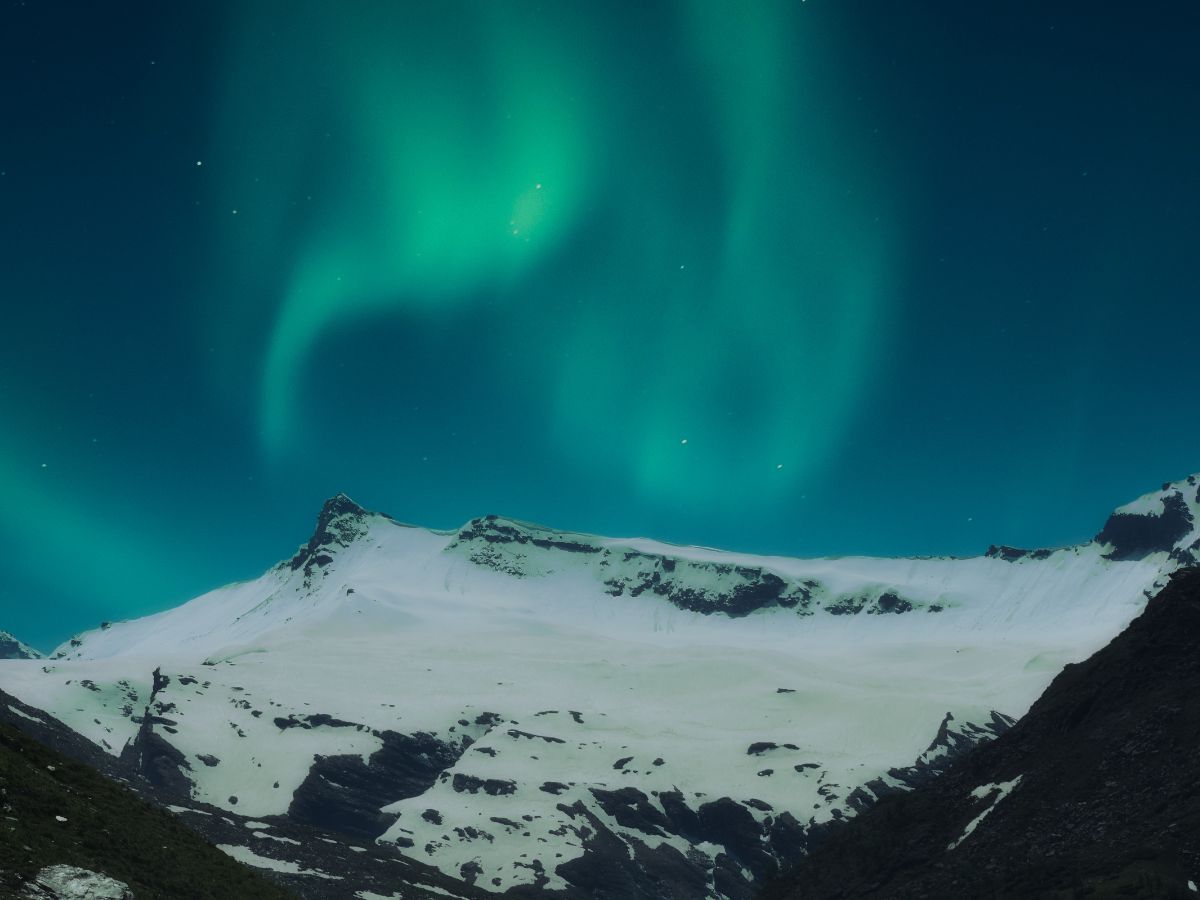
Getting Around Alaska
I am all about the road trip experience (I literally wrote the book on it) and I really love traveling in Alaska via car, but a lot of people, and in particular cruise guests, will plan their travel to Alaska using the Alaska Railroad. This is pricey, but really cool. The observation cars make for beautiful scenery and wildlife watching, similar to riding the Rocky Mountaineer from Vancouver BC to Banff or Jasper AB. I know this isn’t for everyone though. We have a wonderful two week Alaska itinerary that is a road trip but has options for some railroad experiences, so check it out!
If you’re doing part Alaska as a cruise and get to end in Whittier or Seward, that’s a great opportunity to explore more of the state. From either cruise port you can get bus or train transportation to Anchorage where you can easily rent a car. Anchorage is a great starting spot for seeing Alaska, with both Kenai Fjords National Park and Denali National Park being a half day’s drive away. There is lots more to experience besides these two amazing National Parks, but I really think they are highlights.

Airports for Travel to Alaska
Ultimately the airport you fly into for a trip to Alaska is dependent on your itinerary. If you’re doing a cruise to Alaska you’ll likely start in Vancouver BC or Seattle WA, but there are also cruises that start in Whittier or Seward, so you may just get to begin your sailing with a little bit of exploring from Anchorage (ANC) or even Fairbanks (FAI). Flying to Fairbanks allows you to add some epic parts of Alaska to your travel, but then you also need to plan your transportation to your cruise port via train or one-way rental car.
Tip: If you are planning to do a trip that goes into either ANC or FAI and then out of the other, plan to have a drop off fee with your rental car. This can be a few hundred dollars sometimes, or will be disguised as a higher daily rate. Just be sure to read the fine print with any rental, but especially if it’s a one way.
Flying into JNU is great for exploring the area all around Juneau or if you’re doing an UnCruise in Alaska. You can fly into Juneau for some exploring and then jump on the Alaska Marine Highway (ferry system) to another port in the Inside Passage. You could also fly into Ketchikan (KTN) from the mainland, which also connects you to the Alaska Marine Highway or the network of smaller regional flights to other parts of the state.
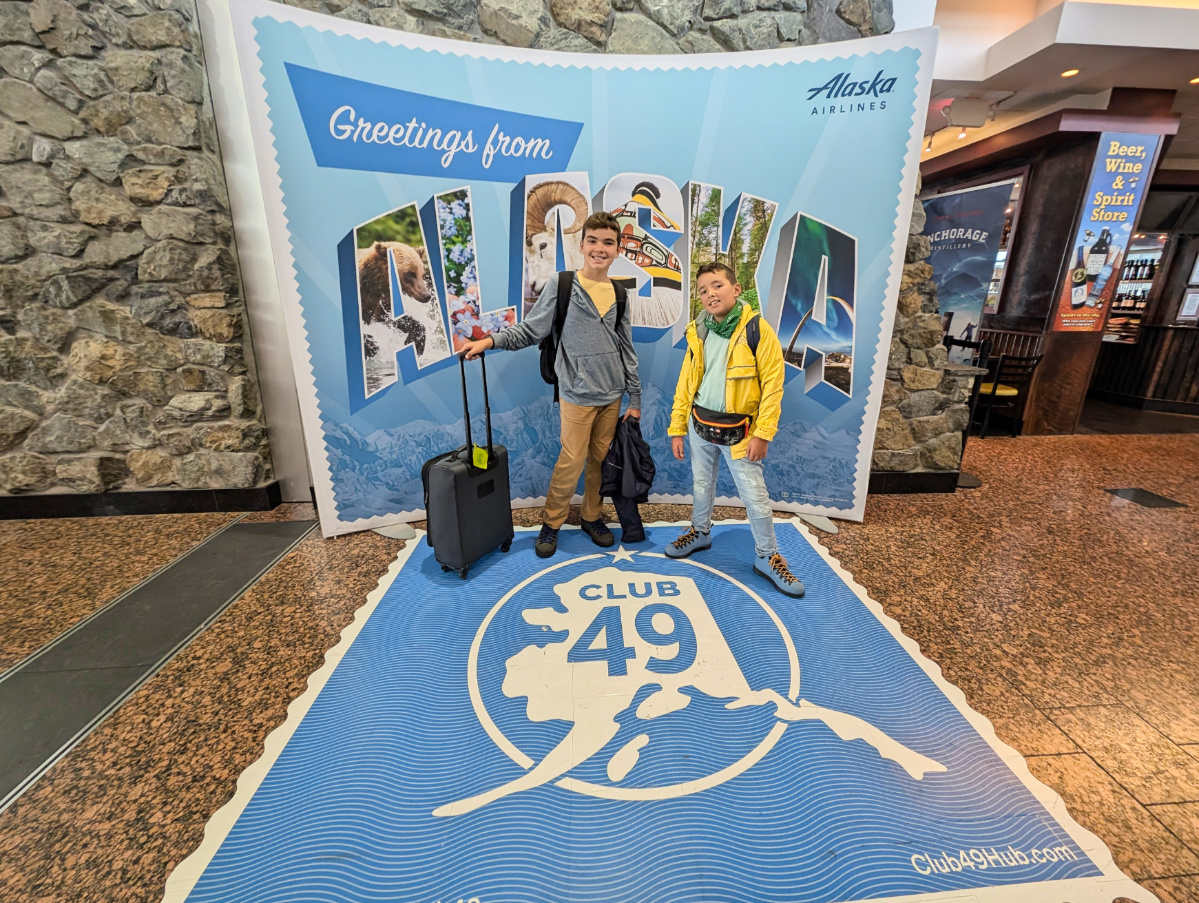
Be Prepared for Remote Travel
I cannot stress the importance of planning for travel between remote locations if you’re travel to Alaska includes some of the less visited areas. Summer is when roadwork can get done and if you’re heading anywhere that isn’t a common tourist destination, you very well may have a good deal of driving on gravel roads or even flying on small planes. I don’t love flying in helicopters or seaplanes, but I think it’s part of the quintessential wilderness experience to fly with a bush pilot company. You can do some pretty amazing flightseeing tours out of Talkeetna if you don’t want to fly and stay somewhere remote but still want the experience.
Once in Alaska, if there are places you want to visit that aren’t connected by roads, you can book Alaska Airlines flights to many of them, like King Salmon, Nome or Kodiak, or you can find very small airlines that specialize in remote transportation. It’s absolutely possible to plan an amazing trip to Alaska that doesn’t include remote travel like this, but it can be really fun and unforgettable.
When it comes to roadways and driving to some of the more remote places, I love getting to drive Alaska’s highways. The main connecting roads are:
- Parks Highway – Anchorage to Fairbanks
- Seward Highway – Anchorage to Seward
- Sterling Highway – Seward Highway to Homer
- Dalton Highway – Fairbanks to Prudhoe Bay
- Richardson Highway – Fairbanks to Valdez (near Wrangell-St Elias NP)
- Glenn Highway – Anchorage to Glennallen (connects for the drive to Valdez)
- Denali Highway – it’s more of a fun off shoot, but not a necessary road for most trips
When you’re renting a car in Alaska, pay attention to the rules for where you CAN’T drive. Some rental agencies have rules against driving any of the gravel highways. If that’s what you’re looking to do, be sure that you’ve double checked in advance or found a rental agency that will allow you to drive those routes.
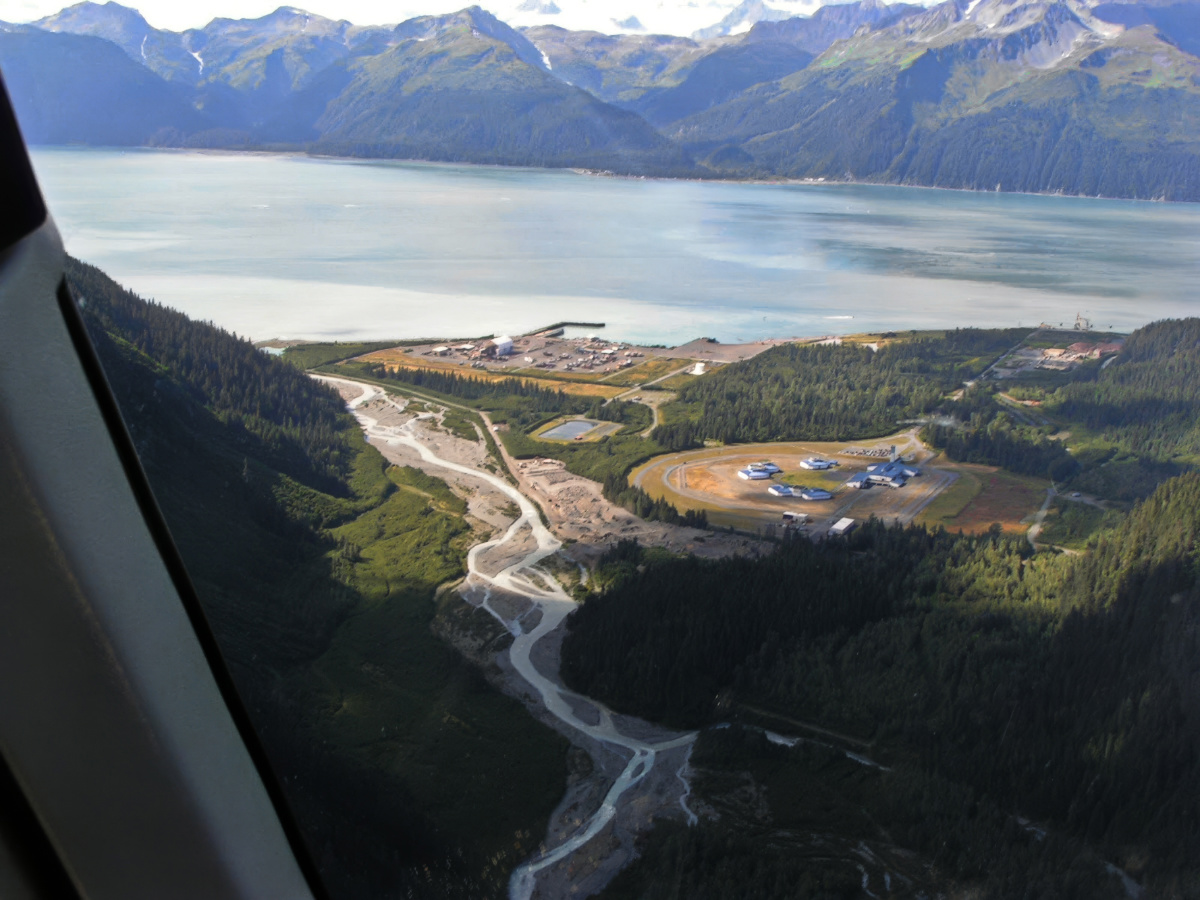
Essential Supplies and Basics to Keep with You
Because sometimes you’re traveling between destinations in Alaska and it’s very far until your next stop, you do need to be prepared with your basic needs. This means that you need to have things like a first aid kit, any medications you travel with, a handy multi-tool, and simple car fix things. Also, if you’re having a long day of travel but will be returning to your same hotel, be sure you bring things like a change of clothes or extra coat, just to be safe.
Also, when you’re out exploring, restaurants and convenient stores are few and far between. It’s not as far to go between as it used to be, but still. I remember having to plan out my stops for gas when I would drive the Al-Can into the Yukon, but there are a few more gas stations and shops now. I like to be sure that I’ve got a gallon of drinking water and plenty of both fresh and non-perishable snacks when we head out to explore.
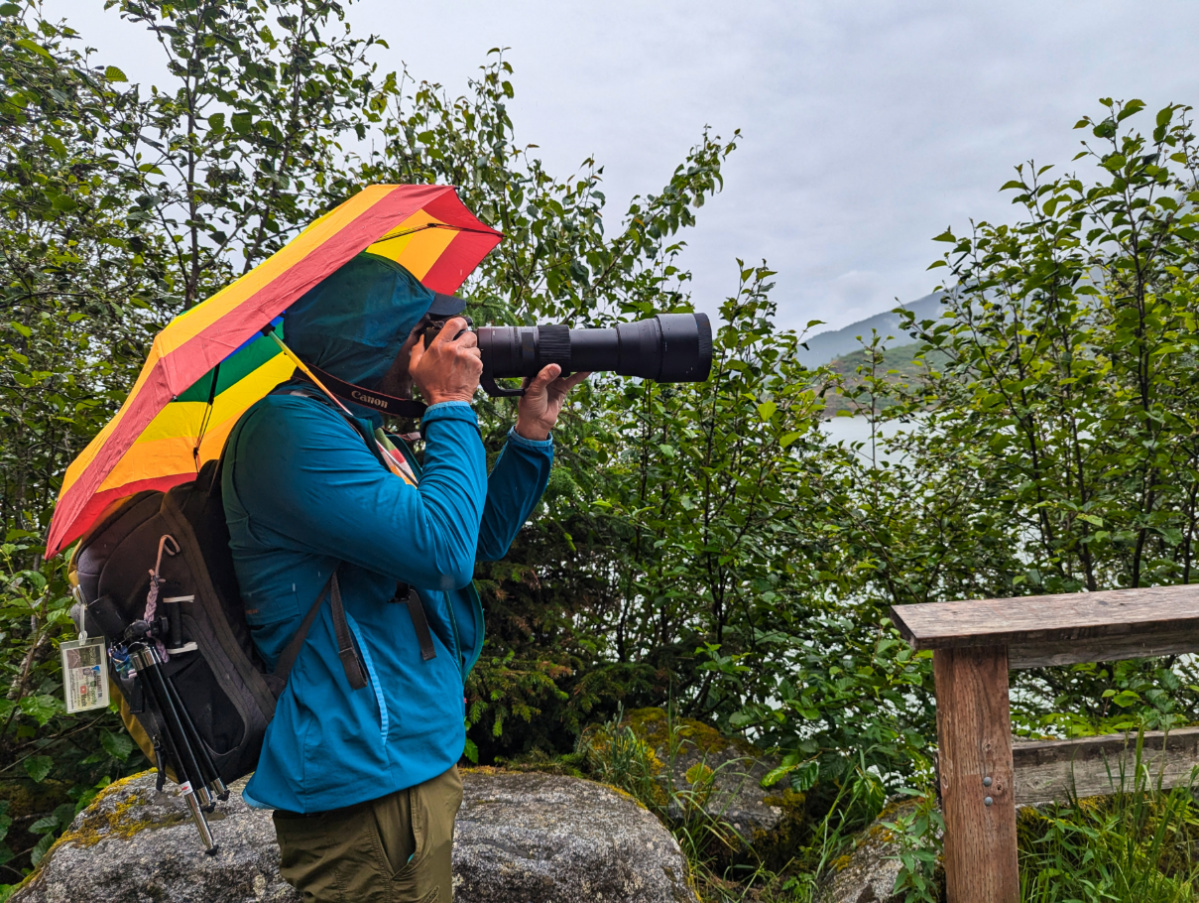
Staying Connected in Alaska
So, how is the cell service in Alaska? Before you travel to Alaska, it’s a good idea to jump onto the website for your cell phone provider and look at their coverage map. You’ll find that there is pretty good coverage all around Anchorage and Fairbanks, and for the miles outside of each city, but that doesn’t mean it’s fast. We find that having full bars on our phones doesn’t mean 5G fast service like it does in the lower 48.
The service isn’t too bad out and about throughout the state, but you need to keep in mind that the more remote you go, the less the cell reception. We are really diligent to download offline maps for easy navigation while we’re in the more remote areas. This added level of planning before hitting the road really alleviates the stress that sometimes hits during a road trip or a day of exploring.
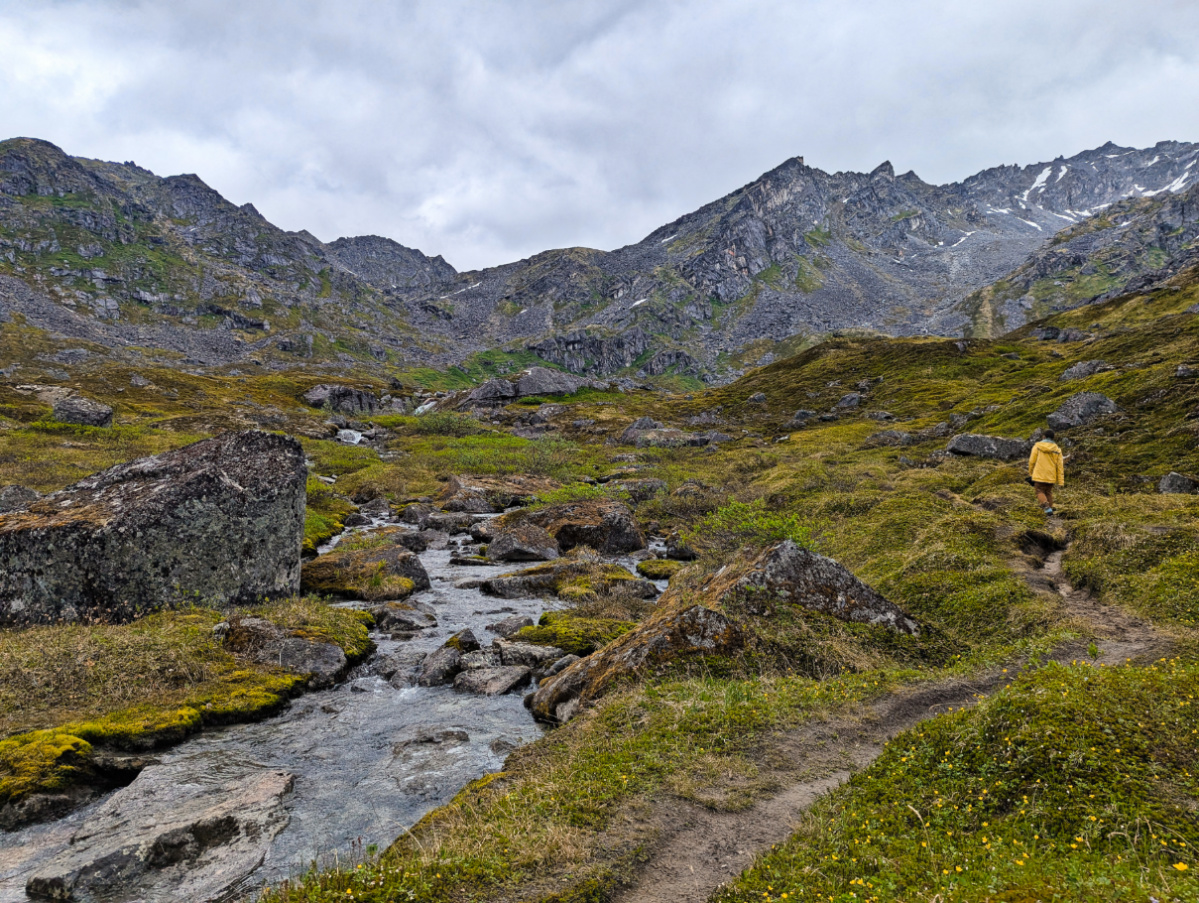
Travel in Alaska’s Wilderness (or just not Anchorage)
Once you’re beyond the bounds of a city, the world absolutely opens up. What that means for travel in Alaska is that there is more wildlife out and about, and more potential for natural wonders and experiences. The elements play into each day of exploring, and this is why we love to talk about being prepared.
Wildlife Safety in Alaska
I love wildlife, and I think my favorite thing about when I travel to Alaska is getting to see so much of it, and sometimes up close! We’re pretty experienced with all sorts of wildlife, whether it’s kayaking with dolphins in the Florida Keys or encountering moose in Maine. Alaska offers all this and more! So here’s what to look for when you come to Alaska and what you need to think of when you encounter it:
- bear – black and brown (big claws and teeth)
- moose – bull (antlers), cow and calf (baby)
- caribou – antlers on both male and female
- lynx – big claws, but a very unlikely encounter
- dolphins and whales – if you’re kayaking they can easily flip your vessel
With any wildlife that you may encounter when you travel to Alaska, you want to give them as much distance as possible. There may be times that you encounter a critter on a trail, and when that happens you need to either turn around protect yourself, but that sort of experience is few and far between. And if you’re kayaking on the Kenai Peninsula, you may find yourself very close to a whale, but again, it’s highly unlikely that you’ll be interacting with wildlife in Kenai Fjords National Park.
The easiest ways to protect yourself if you’re in the wilderness or even on a frequently used trail are just to be aware of your surroundings and give distance. Having bear spray on hand is good as long as you know how to use it. Also, properly storing food and disposing of trash when you’re out in the wild is extremely effective at deterring wildlife.
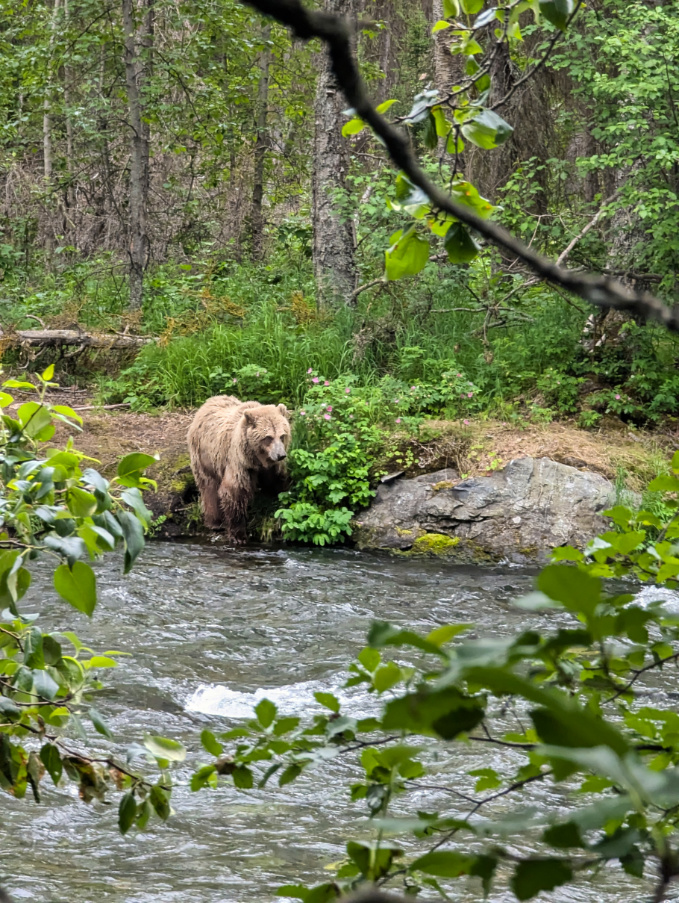
Be Prepared for Outdoor Activities
So, what do you want to do for activities when you travel to Alaska? Hiking, fishing, glacier tours? Dogsledding is always fun. I think something to keep in mind when you visit is that most of the unforgettable Alaska experiences happen outdoors. And like I said before, the weather can be iffy or everchanging. In any case and with whatever activity you choose, you need to approach it with a jacket and a backup plan.
While I wish I could just say to be ready to get a little wet on your hike or something, it’s also a very good idea to be informed about what the cancellation policies for any tours you have planned are. Or to have a good backup plan for any hiking or kayaking you have on your itinerary. Travel in Alaska is sometimes all about being flexible with your plans.
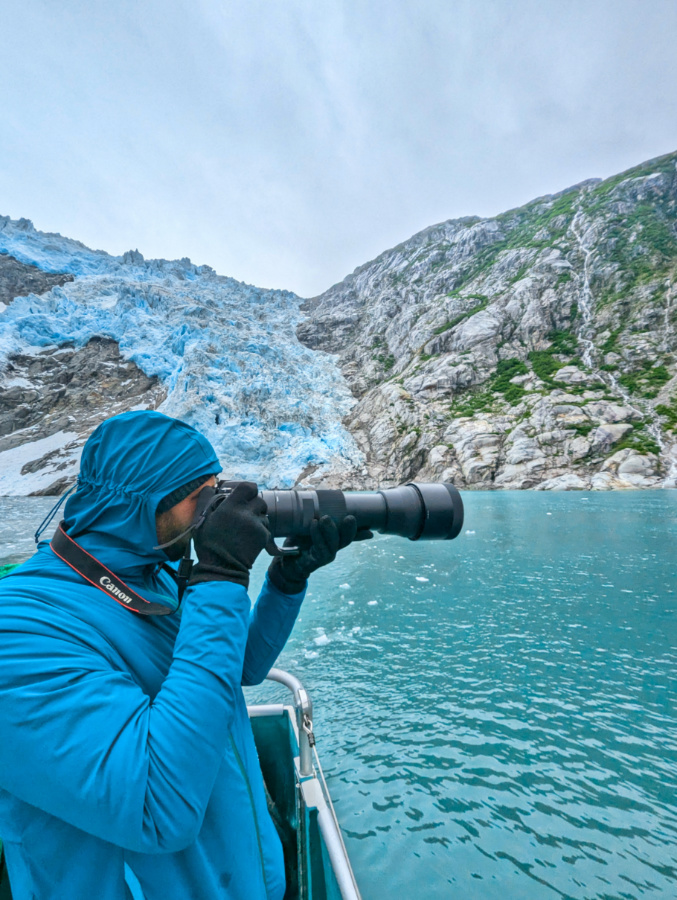
Personal Health While Traveling in Alaska
Another unique element of traveling in Alaska is the sun exposure. Extra long days, elevation or time on the water all can play into how much sun you gets. The sun in Alaska is similar to being in the Andes of Peru or other places that it doesn’t seem like it’s effecting you right away. It’s so easy to get a sunburn when you’re out on the tundra or wildlife watching on a boat. You really have to think about sun protection if the weather is nice while you’re here.
Another health topic we get lots of questions about is how bad the mosquitoes are in AK. So, the mosquito issue is very dependent on where you are and what time of year it is. There are parts of the Interior where the mosquitoes get so bad in the summer that you have to wear protective gear, but that’s not where most people are traveling to (there is some great kayaking in the interior though!). If you’re hiking or bushwhacking in Southeast Alaska, up in the muskeg areas of the hills where it’s boggy, you’ll see some thick swarms of mosquitoes, but even that is manageable with bug spray and maximum skin coverage. Just be smart and you’ll be okay.
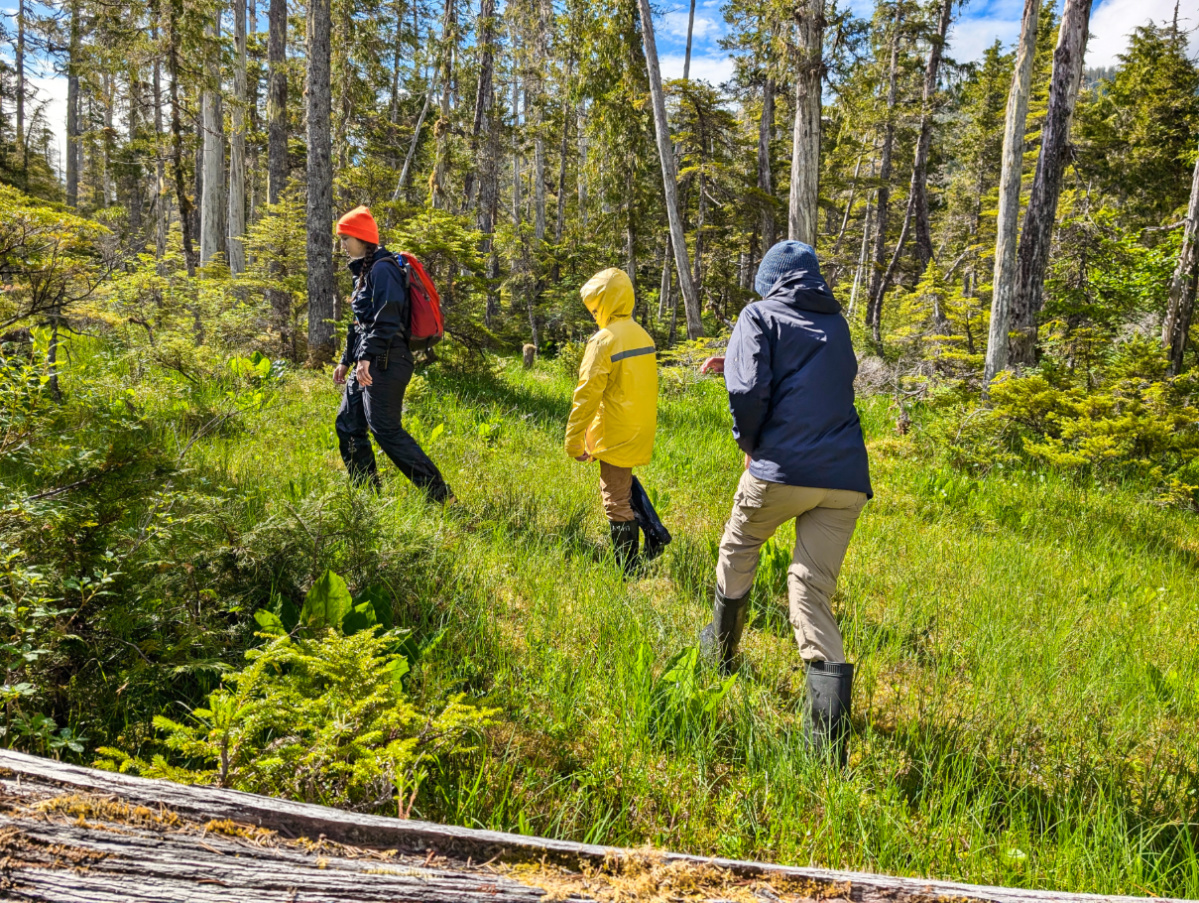
Why Travel to Alaska is Unique
We enjoy going places that really are unique. People love visiting Hawaii because the beaches are great, but we love the Big Island of Hawaii for the volcanoes and heritage sites. And that’s part of why we love Alaska. All of the USA was colonized and peoples were living here long before the white men trapsed across the continent and messed everything up. It’s so far gone now that it is what it is, but there is still hope to celebrate the unique history of Alaska and be a part of its preservation.
Be Aware of Alaska Native Culture
The very first and most important this I can say about any sort of travel to Alaska is to show respect for indigenous communities and their traditions. In Southeast Alaska, aka the Inside Passage, you’ll encounter the Tlingit, Haida and Tsimshian nations, all with their own histories and art. In the interior you may encounter the Koyukon, Gwich’in, Iñupiaq, Han Gwich’in, Tanana, Upper Kuskokwim, Holikachuk, and Deg Hit’an peoples. And then up in the Arctic Circle there are still more nations, with the Inuit and Yupik. In south central Alaska, mainly around Anchorage and the Kenai, the Athabascan people are still very active today.
Wherever you’re visiting, take time to participate in at least one activity that celebrates and supports the local indigenous people. There are wonderful museums, art galleries, events and lots of local businesses that are owned and operated by native Alaskans. Engage with them first and try to learn something with each visit.

Respect Local Laws and Private Property Signage
There’s a lot of private property in Alaska. As you visit and start to travel all over the state, you’ll see that there are lots of No Trespassing signs. Obey them. Also, there are still a lot of active gold mines around Alaska and people actively defend their land. Basically, stick to the public roads and follow the signage that guides you to your destination.
Another thing to pay attention to if you’re heading out on your own is where you can fish. Fishing rules are always important, but especially so in a place like Alaska that is so protected. People come from all around the world to fish for salmon, trout, halibut and cod. It can be quite costly to go with a guide, but ultimately for the permits, the gear, the knowledge and the ease of experiences, it’s very much worth it. If you’re a pro though and have your own gear and know your stuff, fishing in Alaska on your own can be awesome.
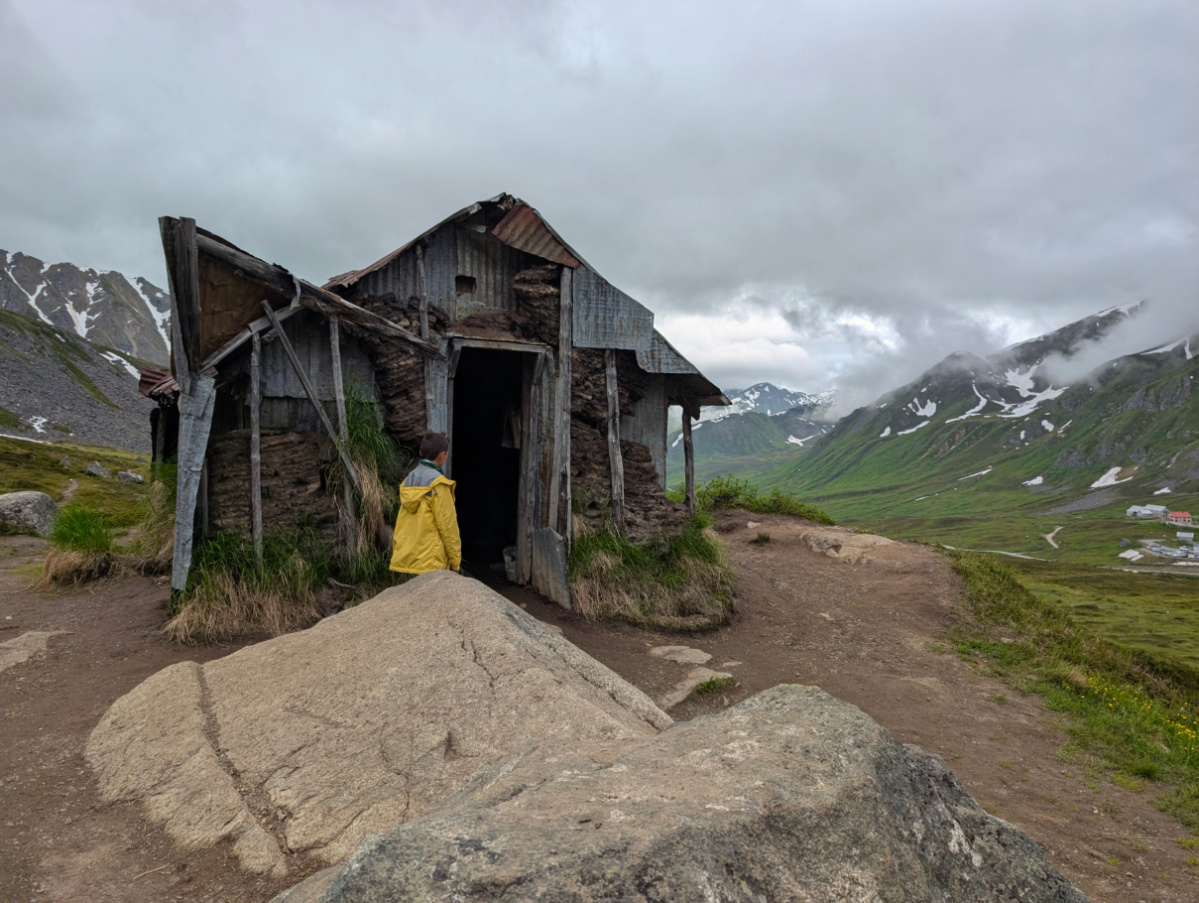
Enjoy the Alaskan Cuisine
I love salmon. I know, there’s more to food in Alaska than just salmon, but it’s my favorite. When you travel to Alaska try to make time for a salmon bake. You’ll find opportunities for community and tourist events all over the place, from Sitka to Fairbanks. And if you don’t want to do an event, you can still find all kinds of salmon in every form. I’m all about the salmon burrito.
There’s more to Alaskan cuisine than salmon though. Watch for reindeer (caribou), piroshkis, local beer and all the seafood. It’s difficult to pinpoint what makes a dish truly Alaskan, but I can tell you that you’ll know it when you see it. Alaskan cooking is usually very simple in terms of preparation and the flavors are simply all very natural. Even when I’ve enjoyed top of the line cooking in AK, it’s always been about the central item of the dish and highlights the freshness. That’s the cuisine.
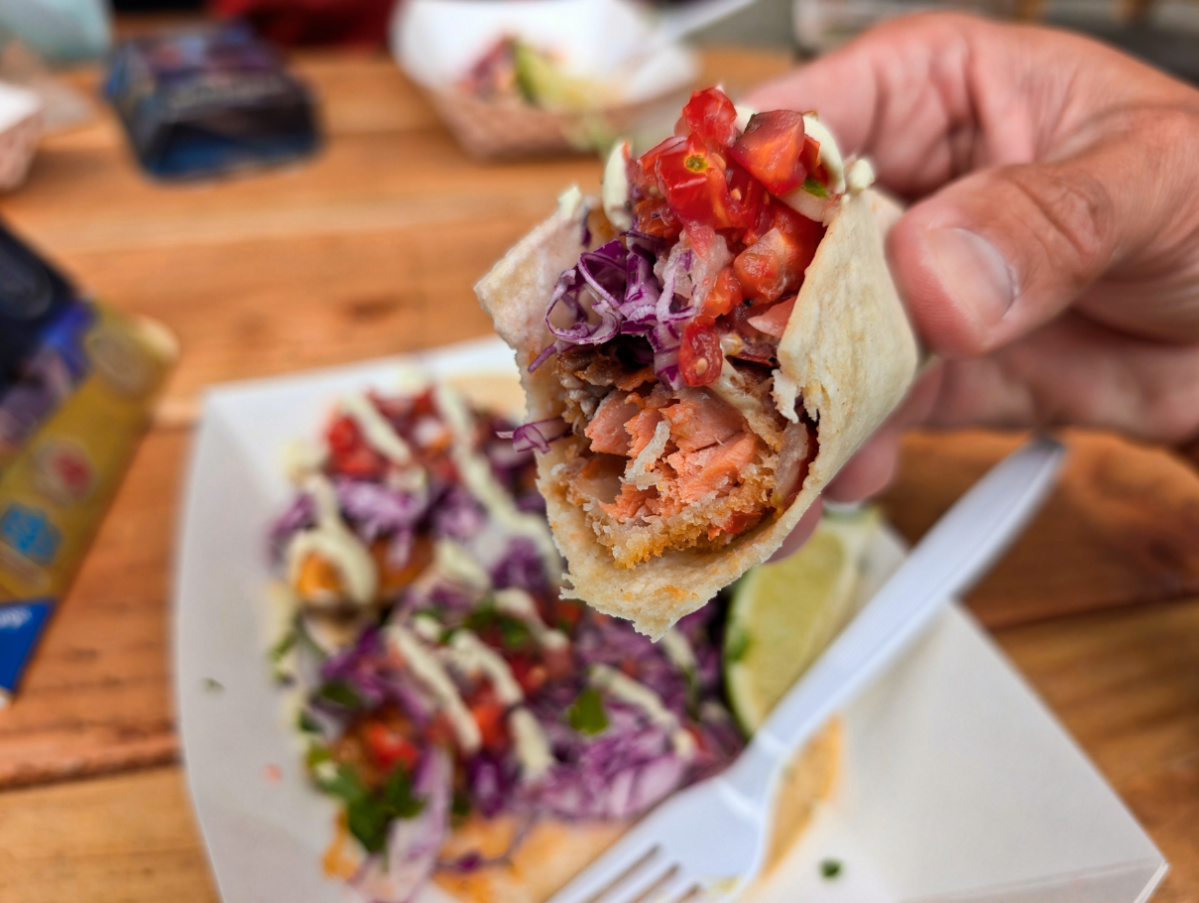
Travel to Alaska is awesome. It takes some planning, but it’s worth it. As long as you’re prepared and flexible, then you will have a great time. If you have any other questions about planning travel to AK or things to do, please leave a comment or send us a note. And please check out our sister site, My Alaska Trip for even more info and ideas for planning an unforgettable visit to AK!
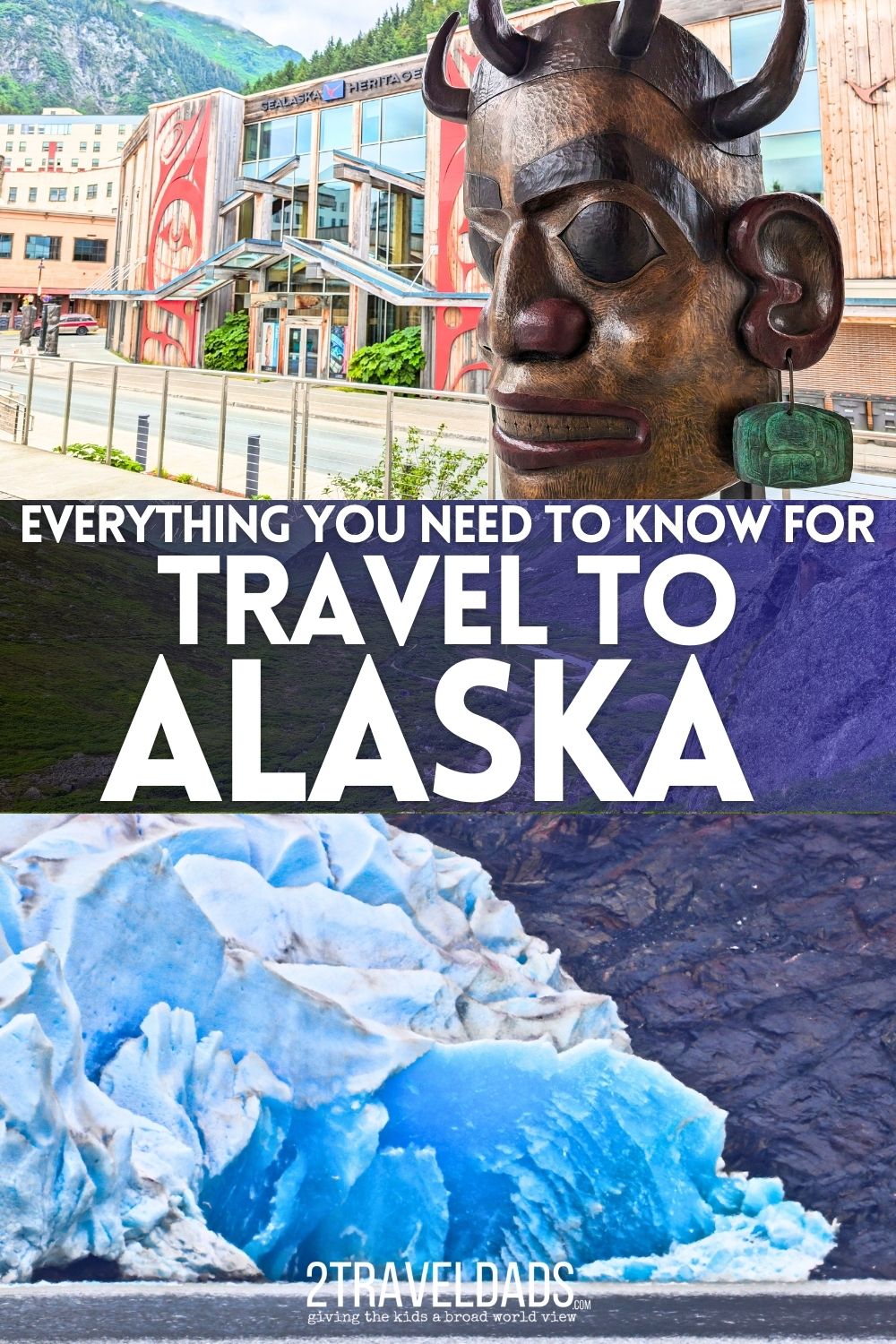



I really want to visit Alaska but I don’t know how to go there. I want to see sea seals.
That’s just why I wrote this and why we’ve built our other webside, MyAlaskaTrip.com. 🙂
“Absolutely agree! Alaska is a dream destination, and with the right planning, it’s truly unforgettable. Thanks for the reminder to stay prepared and flexible!”
“Well said! Alaska is such a stunning place, and a little planning goes a long way. It’s always worth the adventure!”
Visiting Alaska can be a tricky thing, either you never visit again or you never leave it. 🙂